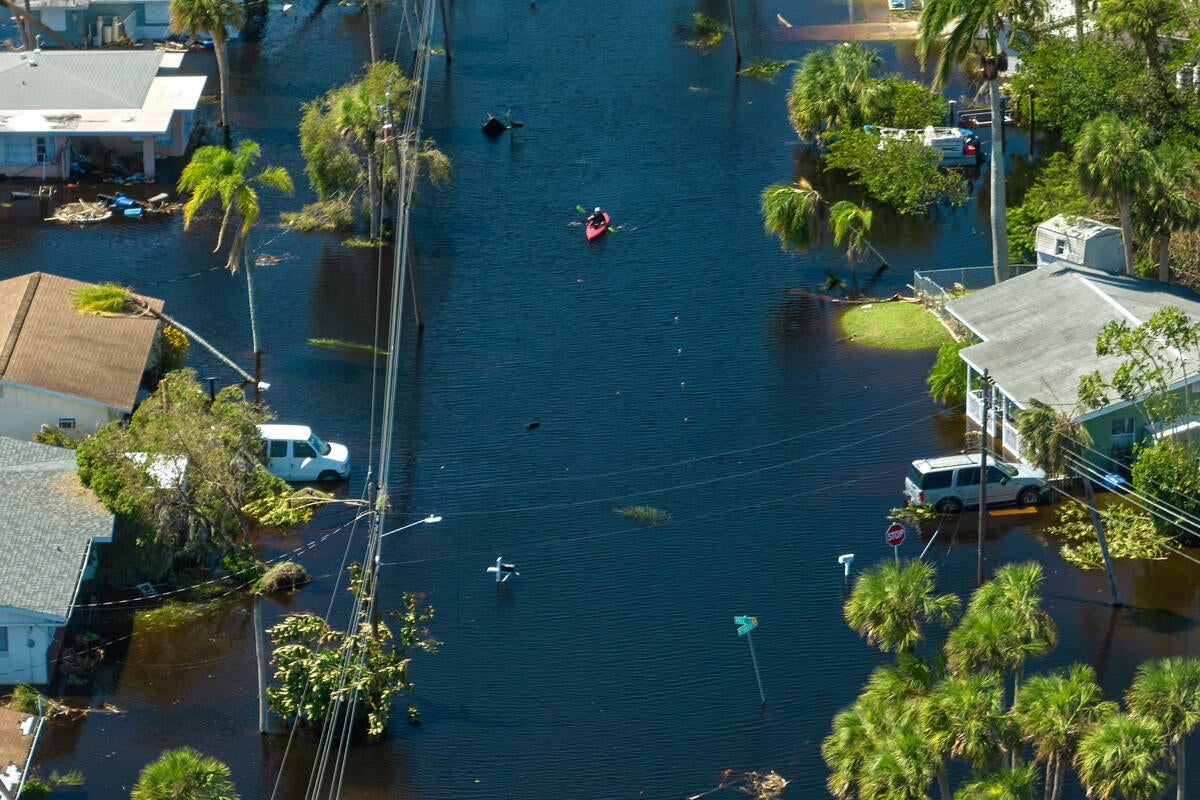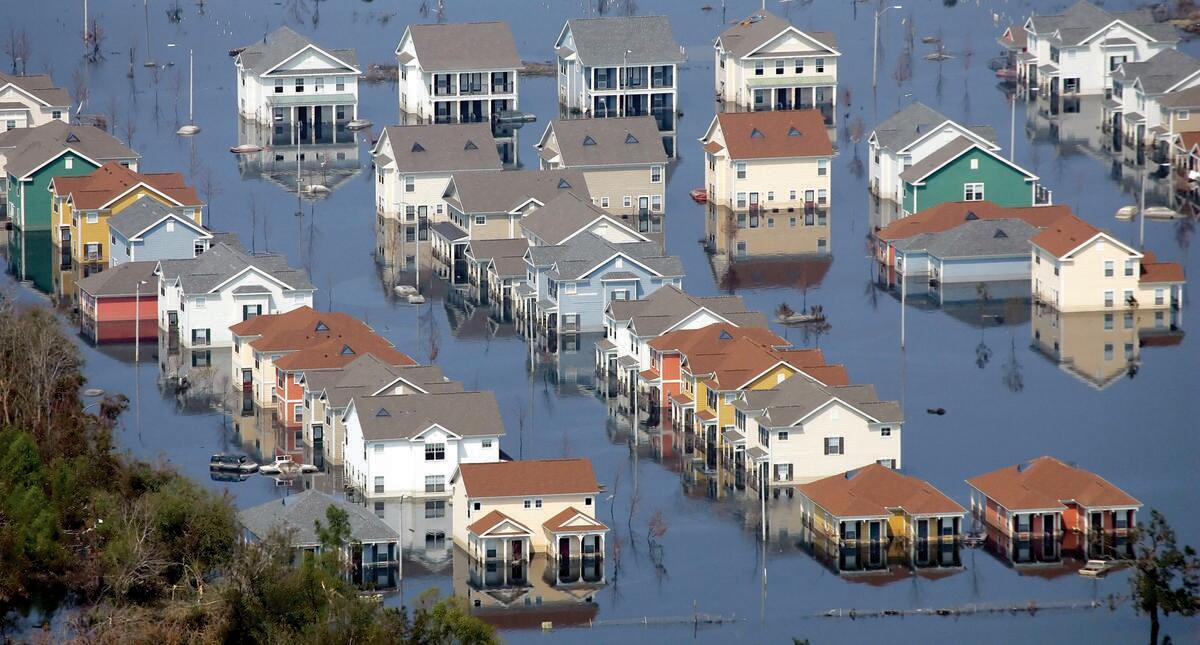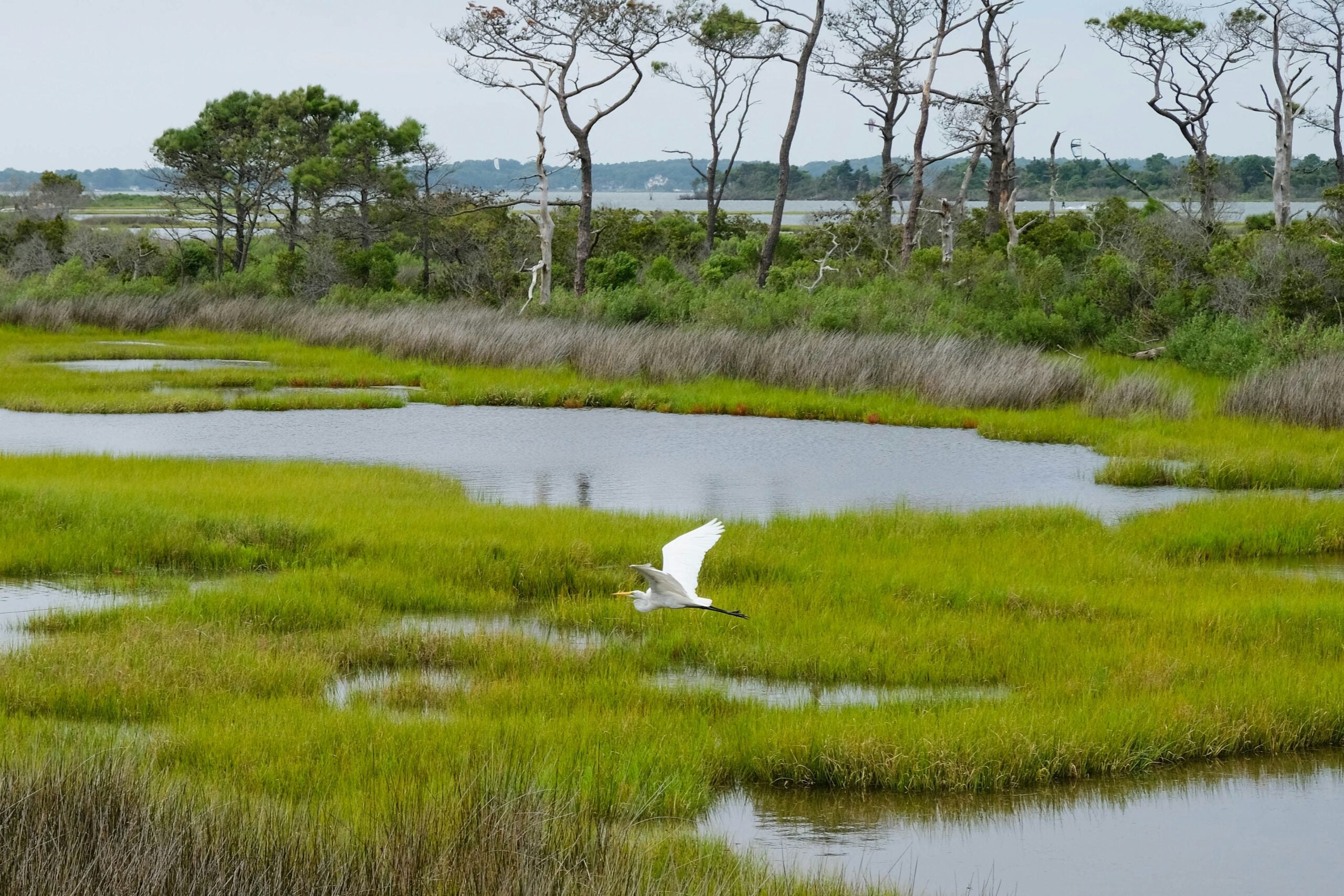On April 4, the Federal Emergency Management Agency (FEMA) was directed under the Trump administration to eliminate one of the largest disaster preparedness programs in the country. By defunding the Building Resilient Infrastructure and Communities (BRIC) program, the administration will be canceling more than $882 million in funding aimed at helping communities reduce their risks and minimize costs ahead of natural disasters. These programs help keep people safe and save taxpayer dollars when future storms hit. As we enter this year’s hurricane season, BRIC funding cuts, along with other actions targeted at dismantling disaster safety nets, leave vulnerable states and communities less prepared than ever.
Growing Returns
Selected tag(s): flood resilience
Major federal funding cuts leave communities less prepared for hurricane seasons
Learn how to navigate federal flood planning with the U.S. Army Corps of Engineers
Flooding is the costliest disaster in the United States, touching communities from coastlines to cities to inland towns, and wreaking havoc across countless homes, businesses and ecosystems. Estimated to cost the nation up to almost $500 billion per year, more frequent and severe flooding events are causing communities to find solutions that tackle the potential impacts.
Many local communities and entities seek opportunities to collaborate with the U.S. Army Corps of Engineers (Corps), who conduct federally funded flood risk management studies. These studies can be a great way to understand flood risks in a community and to build large-scale resilience.
However, through a series of surveys and EDF experiences, many advocacy partners that have participated in these studies expressed the Corps planning process is confusing and complex! To address this concern, EDF is releasing a new step-by-step guide to help communities and fellow advocates navigate federal flood planning and learn when and how to engage.
Explore our step-by-step guide now
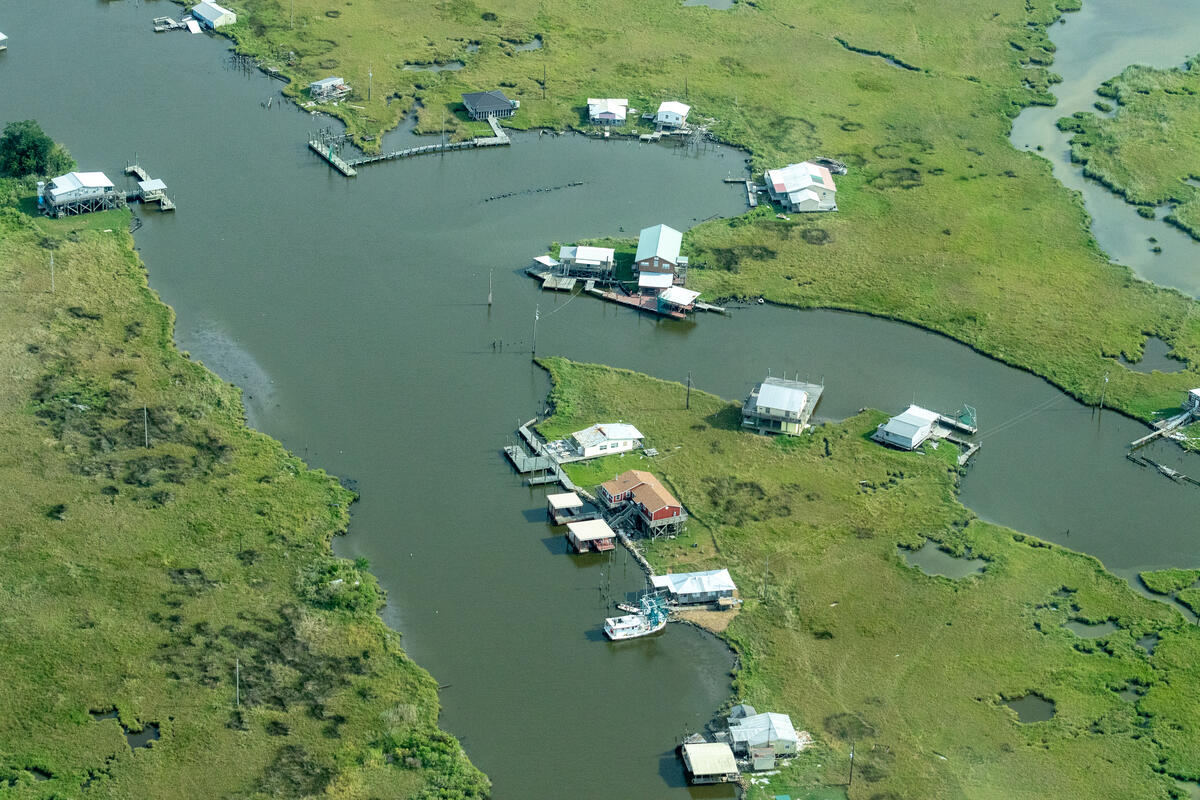
Delta flyover – Mid-Barataria Sediment Diversion wetlands restoration project in the MS River Delta region of Louisiana
What is federal flood planning and how can it help your community?
Before we get into the ins and outs of the step-by-step guide, let’s bring it back to the beginning. What is a federal flood feasibility study anyways?
In simple terms, a federal flood study emerges when a local community or entity, later known as the study’s non-federal sponsor, raises flooding concerns to the Corps and expresses the need for a feasibility study that can identify solutions to this problem. The proposal must be authorized by Congress and receive funding through appropriations, and if that happens, the Corps will move forward with conducting a feasibility study that may eventually lead to the construction of a project(s). Potential projects could include anything from developing floodplain management plans to installing grey and green infrastructure to forming disaster response strategies.
Why should you seek a federal flood study? No matter the size, budget or location, the Corps provides an opportunity to address flood risks in a community. Federal flood studies and their projects are designed to help leaders and communities prepare for extreme weather and disasters, which are increasing in frequency and severity. Experts agree it is financially smart to prepare before disaster strikes, with research showing that every dollar spent on mitigation can save $13 in damages. It also provides a safety net for residents to better protect their homes, businesses and families.
Using our step-by-step guide to navigate federal flood planning
EDF’s new step-by-step guide is a much-requested resource that gives advocates an overview of the complex federal flood planning process led by the Corps. This guide walks you through each step of the planning phase, allowing users to better understand and anticipate how a study and project develops.
We also share ways advocates can engage during the planning process to ensure the study’s outcome best represents their community’s priorities and goals. The guide incorporates helpful resources, like a glossary, FAQ guide and templates along the way.
Looking at case studies
EDF is proud to have worked alongside several local communities on a variety of federal flood studies and projects, represented in the following case studies:
Collier County, Florida
In Collier County, Florida, EDF and local partners engaged in the planning process to propose the prioritization of nature-based solutions as well as hybridized, multi-hazard flooding and community engagement. We presented alternative study renderings with these priorities in mind, gaining media attention and eventually leading to changes in the proposed study.
New York-New Jersey Harbour and Tributaries
In the New York metropolitan area, EDF worked with a coalition of local partners to advocate for changes, like incorporating multi-hazard flooding solutions, to the Corps’ $52 billion plan to address flooding in the New York-New Jersey Harbor. The coalition launched a campaign website, gained media attention and ran advertisements, which led the non-federal sponsor to make a request for the Corps to take specific actions that better align with stakeholder priorities.
Mid-Barataria Sediment Diversion, Louisiana
EDF and partners at the Mississippi River Delta Coalition have guided the Mid-Barataria Sediment Diversion project and played a key role in advocating for a $2.9 billion initiative to reconnect the Mississippi River to the Barataria Basin. Learn more about the benefits of this project.
Explore our step-by-step guide now
Celebrating the groundbreaking of a natural infrastructure project to combat flooding in North Carolina
Environmental Defense Fund (EDF) joined North Carolina’s Department of Environmental Quality (DEQ) at a groundbreaking event today to celebrate the progress of a new and significant natural infrastructure pilot project.
The Stoney Creek pilot project is an innovative approach to utilizing natural infrastructure and nature’s processes to address flood risk in the City of Goldsboro and in the greater area of Wayne County, North Carolina. Moreover, it is a major step forward in advancing community flood resilience across the entire state.
Driving recovery and resilience in North Carolina after Hurricane Helene
In recent years, North Carolina communities have weathered one storm after another, with Hurricane Helene being no exception. Hurricane Helene followed a once-in-a-thousand-year rain event in western North Carolina, which as a result caused widespread devastation and $53 billion of damage to the state alone. The impacts also stretched far beyond North Carolina, affecting communities throughout the southeastern U.S., demonstrating the growing need to prepare for increasingly severe storms.
In the wake of Hurricane Helene, FEMA introduced a $2.1 billion relief package to support families and businesses affected. These relief efforts offered some essential support in the aftermath but only scratched the surface of what is needed to truly help communities.
Moving forward, we must work to safeguard communities by investing in long-term resilience and preparedness. 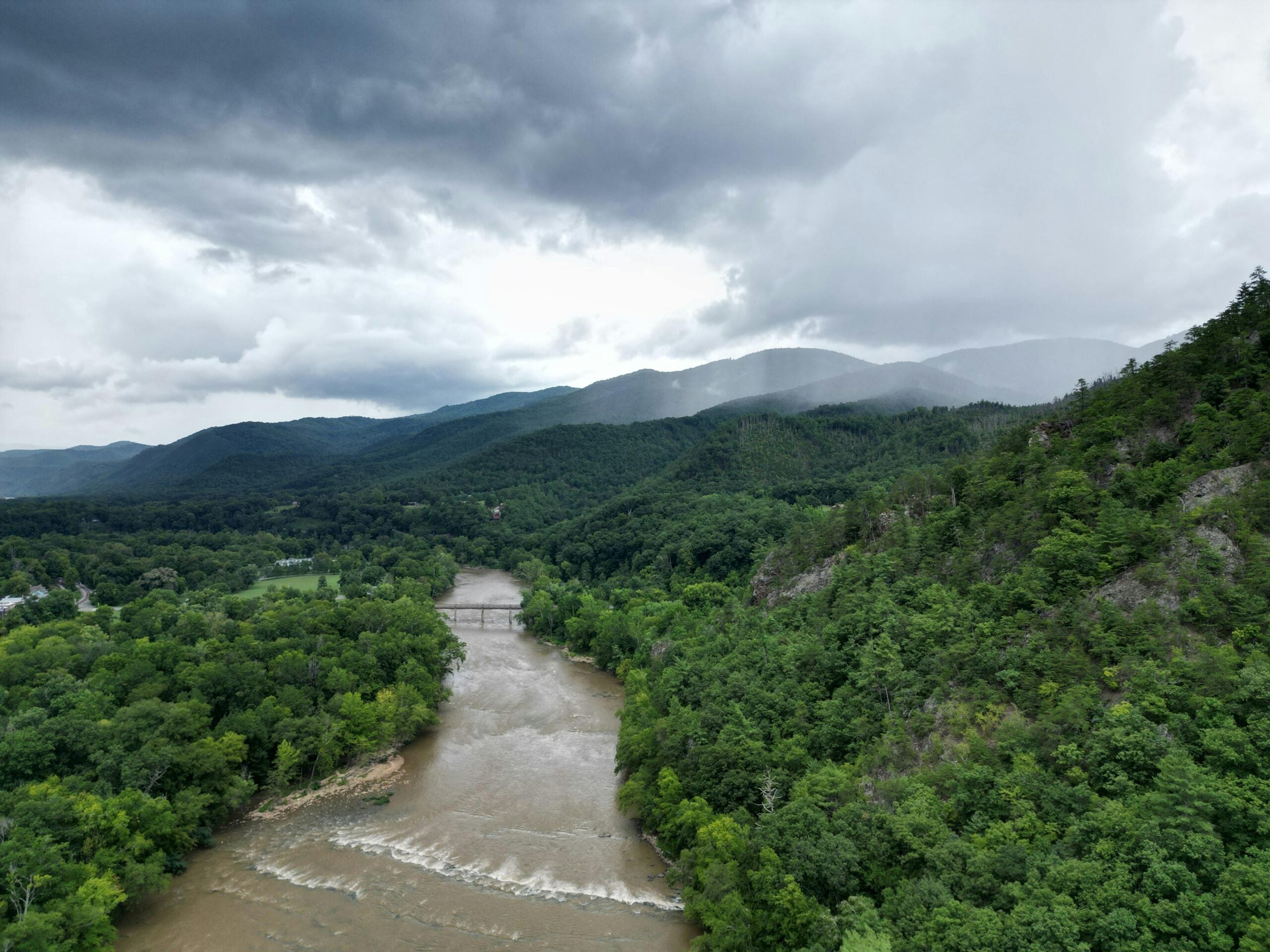 Read More
Read More
Ahead of the 2025 General Assembly, here are 3 ways to build flood resilience in Virginia
Virginia Conservation Network, a statewide coalition of 170 conservation partners, released its 2025 Common Agenda this year, providing a comprehensive overview of Virginia’s environmental policies and priorities to lawmakers and stakeholders. Detailed in the agenda are three key opportunities for lawmakers to continue progress on flood resilience initiatives.
While hurricane season officially ended on November 30, many Virginians in the southwest region are still recovering from the devastating impacts of Hurricane Helene. We stand with those communities as they recover and must remember that now is not the time to lose focus on reducing the risk of increasing climate-driven storms and disasters. According to the agenda’s co-authors from EDF’s Climate Resilient Coasts & Watersheds Virginia program, the following three flood resiliency opportunities should be a critical focus in the coming year.
How can we support New York City’s housing cooperatives in adapting to climate change?
Co-authored by: Anushi Garg and Linda Shi
Anushi is the senior analyst for Environmental Defense Fund’s Climate Resilient Coasts & Watersheds program in New York-New Jersey. Linda is the associate professor for Department of City and Regional Planning at Cornell University.
New York City, like many cities, is simultaneously facing a housing affordability crisis and the impacts of climate change. As the city responds to these complex, interlinked challenges, it is critical to find solutions that ensure all New Yorkers have access to housing that is affordable and adapted to a changing climate.
Unfortunately, cooperative housing, also known as co-ops, lacks access to many public sources of climate adaptation and disaster recovery funding, despite making up more than 12% of the city’s housing stock. Co-ops have a unique ownership model, one where residents have shares in a corporation that owns the building, as well as a proprietary lease tied to their unit, rather than a property title. This model helps preserve long-term affordability, but can also prevent co-ops from accessing resources geared towards housing that is owned by an individual.
To support affordable multi-family co-ops, Environmental Defense Fund, Urban Homesteading Assistance Board (UHAB) and Cornell University released An Assessment of NYC Cooperative Housing’s Climate Vulnerability and Barriers to Adaptation. This report, based on a mapping assessment, a first-ever survey of co-ops and a policy review, looks at climate impacts on permanently affordable co-ops in New York City and encourages more responsive and equitable policies. Read More
Three ways to make home buyouts more efficient
By: Gabrielle Rosario, EDF Intern
Each year, flood risk increases from sea level rise and storms, raising major concerns among millions of homeowners. Flooding can inundate homes, damage property and cause safety and health concerns, as well as isolate residents from essential government services like trash pickup or emergency vehicle access. In fact, by 2030, over 20 million Americans will be at risk of inundation due to sea level rise, and many will be unable to afford to move.
Managed retreat policies, such as voluntary home buyouts, can facilitate the relocation of residents out of increasingly flood-prone communities. But unfortunately, existing federal programs are slow and require local governments to meet complex and challenging guidelines.
Innovative approaches are needed to make buyouts more efficient. Here are three strategies that can help:
One year ago, the U.S. Supreme Court rolled back federal wetland protections. Here are the impacts so far.
One year ago, the U.S. Supreme Court issued a decision that significantly reduced federal wetlands protections, leaving America’s wetlands at greater risk of development and degradation. The case of Sackett v. EPA was decided 9-0 in favor of the Sacketts, a couple from Idaho that filled in wetlands to build on their property near Priest Lake. The Court ruled unanimously that the wetlands on the Sackett’s property were not regulated under the Clean Water Act, but a narrow majority of justices went further to issue a controversial 5/4 opinion that scaled back federal protections that have provided for the thoughtful conservation of America’s wetlands for decades. Of note, Justice Kavanaugh, siding with the minority, expressed concern about the decision’s “significant repercussions for water quality and flood control throughout the United States.”
The impacts of the decision are still unfolding, and there remains a lot of uncertainty on how the unclear language of the Court will be interpreted in the long term. But what we do know is that this decision will have a significant impact. Here’s where things stand one year later. 
Developing effective ways to measure a community’s climate resilience
Co-authored by: Anushi Garg and Ravena Pernanand
Anushi is the senior analyst for Environmental Defense Fund’s Climate Resilient Coasts & Watersheds program in New York-New Jersey. Ravena is a research analyst at Regional Plan Association.
Across the globe, we are experiencing detrimental impacts from climate change, with low-wealth communities and communities of color hit the hardest. And while there are several ways we can measure climate impacts — such as determining sea level rise or increasing temperatures — we still lack ways to easily answer the question “how resilient are we?” Or “how does one community’s resilience compare to another?” The right tools are needed to understand how well our communities, ecosystems and infrastructure bounce back from or avoid climate impacts in order for government officials, advocates and community members to effectively assess, track and implement future solutions.
To address this gap, Environmental Defense Fund (EDF) and Regional Plan Association (RPA) collaborated on a pilot project alongside partners and stakeholders in New York City. We characterized stakeholders’ resilience priorities, such as having access to affordable and climate-safe shelter, and identified indicators that could measure the progress of these priorities. Read More
Our Nation’s wetlands are at risk. So is our ability to manage flooding.
Following the Sackett v. EPA Supreme Court decision in May 2023, millions of acres of wetlands across the U.S. lost critical federal protections they once had under the Clean Water Act. The affected wetlands – which include those that do not have a continuous surface water connection to another federally protected body of water, like streams, lakes or an ocean – are now potentially at risk of loss and degradation. Also at risk could be the multitude of benefits provided by wetlands, which support clean drinking water, habitat for fish and wildlife, human health and well-being, contribute to economic activity and reduce damages from flooding.











